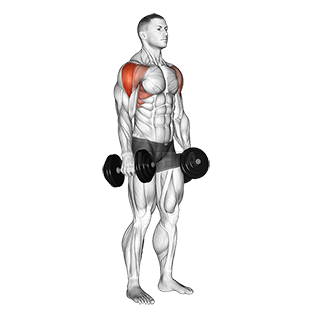
Lever Lateral Raise
Exercise Profile
Related Exercises:
Introduction to the Lever Lateral Raise
The Lever Lateral Raise is a strength-building exercise that primarily targets the deltoids, enhancing shoulder stability and upper body aesthetics. It is ideal for both beginners and advanced fitness enthusiasts as it can be easily adjusted to match the individual's strength level. People would want to do this exercise to improve their shoulder strength, enhance their posture, and contribute to a well-rounded upper body workout.
Performing the: A Step-by-Step Tutorial Lever Lateral Raise
- Keep your back straight, and your feet shoulder-width apart. This will be your starting position.
- Keeping your arm straight, slowly raise the lever or dumbbell to the side until your arm is parallel with the ground. Ensure that the movement is controlled and that you are not swinging the weight.
- Pause for a moment at the top of the movement, then slowly lower the lever or dumbbell back to the starting position.
- Repeat these steps for the desired number of repetitions, then switch to the other arm.
Tips for Performing Lever Lateral Raise
- Weight Selection: Avoid using too much weight. It's a common misconception that using heavier weights will lead to faster muscle gain. However, using weights that are too heavy can lead to improper form and potential injury. Start with lighter weights and gradually increase as your strength improves.
- Elbow Position: Keep your elbows slightly bent during the exercise. This reduces the strain on your joints and focuses the workout on your shoulder muscles. Avoid locking your elbows as this can lead to injury.
- Controlled Movement: The Lever Lateral Raise should be performed in a slow, controlled manner. Avoid the temptation to rush through the exercise.
Lever Lateral Raise FAQs
Can beginners do the Lever Lateral Raise?
Yes, beginners can perform the Lever Lateral Raise exercise. However, it's important to start with a low weight to ensure proper form and prevent injury. As with any new exercise, it's recommended to have a trainer or experienced individual demonstrate the exercise first. This can help beginners understand the correct form and technique, reducing the risk of injury.
What are common variations of the Lever Lateral Raise?
- Cable Lateral Raise: This variation uses a cable machine, which provides constant tension throughout the movement and can help to improve muscle endurance.
- Seated Lateral Raise: This variation is performed while seated, which can help to isolate the shoulder muscles and prevent using momentum to lift the weights.
- Bent-Over Lateral Raise: This variation targets the rear deltoids, as you are bent over while performing the exercise.
- One-Arm Lateral Raise: This variation is performed with one arm at a time, allowing for a greater focus on each individual shoulder and potentially identifying and correcting any muscle imbalances.
What are good complementing exercises for the Lever Lateral Raise?
- Upright Row: The upright row also targets the deltoids as well as the trapezius muscles, complementing the Lever Lateral Raise by providing a different angle of resistance and helping to develop and balance the upper body strength.
- Bent Over Reverse Fly: This exercise complements the Lever Lateral Raise by working the posterior deltoids and upper back muscles, providing a balanced shoulder workout and helping to improve posture and prevent shoulder injuries.
Related keywords for Lever Lateral Raise
- Leverage shoulder workout
- Lateral raise machine exercise
- Shoulder strengthening with leverage machine
- Lever Lateral Raise technique
- Shoulders workout on leverage machine
- Lever machine exercises for shoulders
- Lateral raise with lever equipment
- How to do Lever Lateral Raise
- Lever Lateral Raise for shoulder muscles
- Shoulder toning with Lever Lateral Raise.








